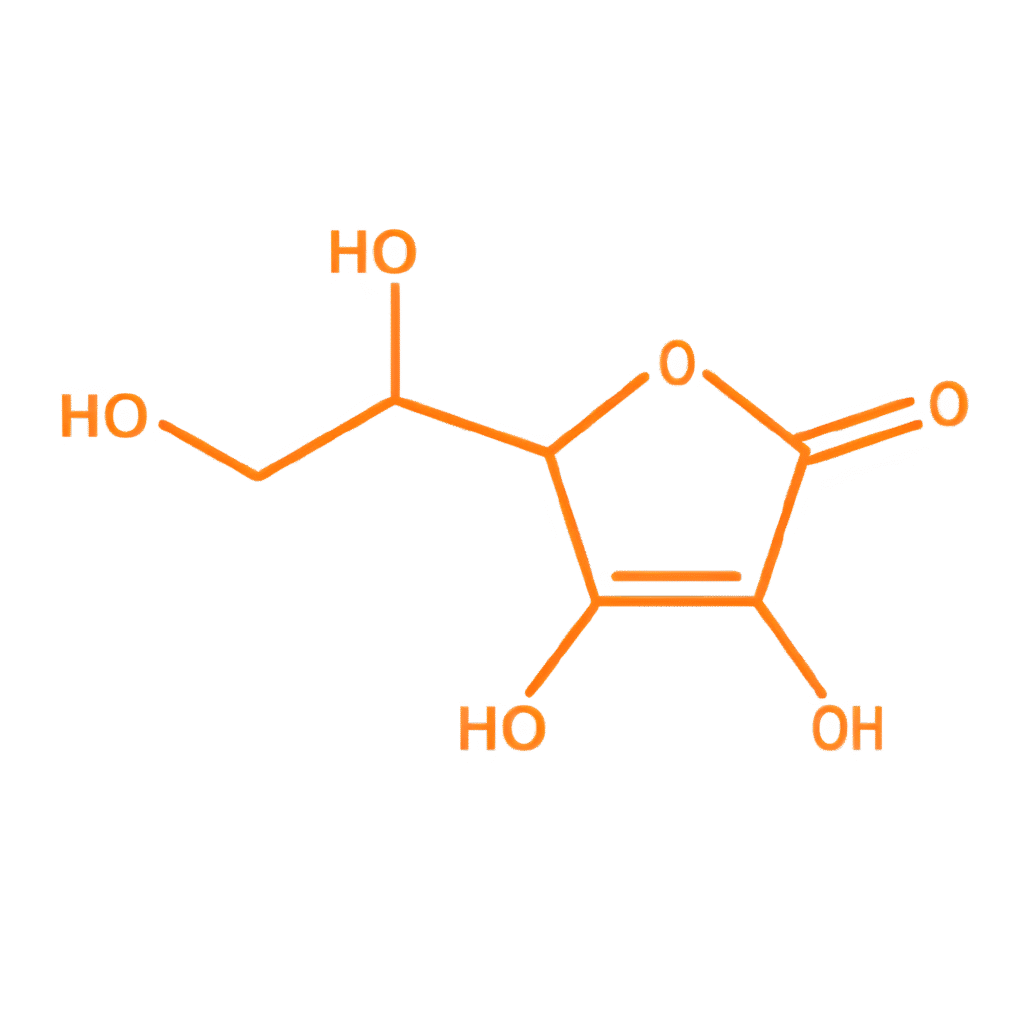Unlock the full power of Vitamin C for faster recovery, stronger immunity, and cellular defense. Learn how to use it tactically for real performance gains.
Navigation: Stack Index | Vitamins | Minerals | Supplements

Vitamin C (ascorbic acid) is one of the most researched micronutrients for recovery, immune support, and tissue repair. If you still think Vitamin C is just for cold season or citrus ads, you’re missing one of the most underrated biological upgrades in the modern performance toolkit.
This water-soluble nutrient does a lot more than support your immune system — it actively rebuilds tissue, enhances stress resilience, and scavenges the oxidative damage that grinds down high performers over time.
Tactical Guide
- Key Functions & Mechanisms
- Food Sources vs Supplementation
- Dosing Recommendations & Timing
- Tactical Stacks
- Signs of Deficiency
- Risks & Safety
- Who Should Consider Vitamin C Optimization
- Common Biohacker Mistakes
- References & Further Reading
For athletes and biohackers or anyone operating at the edge — recovery isn’t optional. It’s a daily mission-critical process. That’s where Vitamin C shines. Beyond its well-known role in immunity, it functions as a biochemical workhorse behind collagen synthesis, antioxidant defence, and adrenal hormone support. In short: it helps your body repair faster, adapt more efficiently, and defend itself under pressure.
But not all uses of Vitamin C are created equal. Most people rely on outdated dosing, miss critical synergies with nutrients like collagen or zinc, or overload on megadoses that get flushed out before they do anything useful. To truly unlock its potential, you need to understand the timing, the form, and the context in which Vitamin C works best.
This guide breaks it down for tactical use: how Vitamin C works at the cellular level, when to supplement (and when not to), what stacks to combine it with for recovery, and which biohacker mistakes to avoid. Whether you’re healing from injury, training hard, or just trying to stay unbreakable in a chaotic world, this is the Vitamin C protocol that actually moves the needle.
Key Functions & Mechanisms
- Collagen Synthesis: Essential cofactor for proline and lysine hydroxylation, which drive collagen production for skin, joints, and connective tissue repair.
- Immune Support: Enhances activity of neutrophils, supports epithelial barrier function, and modulates inflammation.
- Antioxidant Defense: Potent free radical scavenger, helping buffer oxidative stress from training, environmental toxins, or illness.
- Hormonal Support: Aids adrenal gland function, supporting cortisol synthesis during periods of high stress or exertion.
Food Sources vs Supplementation
Rich Food Sources
- Citrus fruits (oranges, lemons, limes)
- Kiwi
- Strawberries
- Bell peppers
- Broccoli and Brussels sprouts
- Leafy greens (kale, spinach)
Supplementation Considerations
Intense training, illness, travel, or oxidative exposures increase demand. High-performance individuals may benefit from targeted supplementation to maintain plasma levels during these stressors.
Dosing Recommendations & Timing
| Context | Suggested Intake |
|---|---|
| General public RDA | 90 mg/day (men), 75 mg/day (women) |
| Active individuals under training stress | 250–500 mg/day (divided doses) |
| Acute recovery (injury, illness, oxidative stress) | 1,000–2,000 mg/day (short-term use) |
Best practice: Divide doses throughout the day to maintain optimal plasma levels. Excess beyond ~500 mg in a single dose shows diminishing returns due to renal excretion.
Tactical Stacks
| Goal | Stack & Rationale |
|---|---|
| Injury Recovery & Connective Tissue Repair | Vitamin C + Collagen Peptides + Gelatin + Magnesium — promotes collagen cross-linking and speeds repair. |
| Immune Hardening | Vitamin C + Zinc + Quercetin + Vitamin D3 — supports innate and adaptive immunity during stress exposure. |
| Antioxidant & Hormonal Support | Vitamin C + Adaptogens (Rhodiola, Ashwagandha) — buffers oxidative load and supports adrenal recovery. |
Signs of Deficiency
- Delayed wound healing
- Bruising and capillary fragility
- Joint pain
- Weakened immunity and increased infections
- Dry, rough skin
- Fatigue
Risks & Safety
- Vitamin C is water-soluble; toxicity risk is low.
- Excessive intake (>2,000 mg/day long-term) may cause GI upset or diarrhea.
- High doses may increase oxalate levels in susceptible individuals — caution for those prone to kidney stones.
Best practice: Dose intelligently around training, stress, or recovery phases. Cycle mega-dosing to avoid adaptation.
Who Should Consider Vitamin C Optimization
- Athletes in heavy training or competition cycles
- Tactical operators exposed to environmental stressors
- Biohackers focused on recovery and antioxidant defense
- Older adults with increased oxidative load
- Individuals healing from injury or surgery
Common Biohacker Mistakes
- Relying on high single doses instead of divided dosing
- Overusing mega-doses long-term without a reason
- Neglecting synergy with collagen peptides for connective tissue repair
- Failing to adjust intake based on activity or stress load
References & Further Reading
- Vitamin C Fact Sheet – NIH ODS
- Vitamin C and Immune Function – PMC
- Vitamin C and Collagen Synthesis – PubMed
- Health Benefits of Vitamin C – Healthline
Disclaimer: This article is for educational purposes only and is not medical advice. Always consult with a healthcare professional before starting any supplementation or treatment.
Navigation: Stack Index | Vitamins | Minerals | Supplements